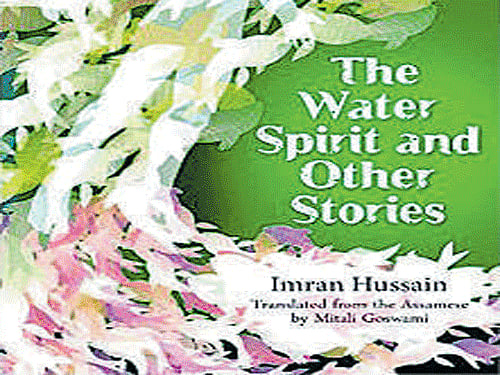
The Water Spirit and Other Stories
Imran Hussein
Harper Perennial
2015, pp 182, Rs 216
A rich tapestry is a complex work of art. There is a broad depiction of a story. But, it is only on drawing closer that one appreciates the finer details, notices the sophisticated interplay of the warp that provides the framework and the weft threads that tell a story.
So it is with Imran Hussein’s The Water Spirit and Other Stories — a tapestry of words, images, emotions. Folklore is the warp. On it is an expert weaving of poverty, desperation and hopelessness. Lurking on the sides are the darker shades of brutality, lust and maligned innocence with stray bright strands of courage and self-determination. The result is brilliant!
The story of an old opium addict in “Utsav” is heart-wrenching. In a village in the back of beyond, an old man tempted by his hunger for money and greed for opium agrees to consume a quantity of green chillies and unwittingly becomes a cause for celebration. Crowds gather and goad, music blares from the gramophone as the old man brings himself to the brink of physical destruction. Hanging on to him is his little, motherless daughter who sees and panics but can only look. The event is orchestrated by Jagat Mahaldar, a respected man of the village, but scratch his surface and you see a savage bloodthirstiness skulking beneath. The story juxtaposes the old man’s ruin with the awakening of fury in the once timid wife of Jagat Mahaldar.
“Jatra” is the journey by rail, of 13-year-old Dulali with her aunt Rabeya to sell firewood to eke out a pitiful existence. On the train, the loud-mouthed arrogance of a young fop has to be endured along with a disgusting Marwari who sidles a foot into Dulali’s lap for a feel. Concurrently, it is an inner journey and it turns Dulali from being a scared slip of a thing into a spitfire spouting obscenities.
“Pokhila” is a young girl on the brink of adolescence, who is forced by crushing poverty to work as a maid. But the pawing hands of the master and the shrillness of her mistress send her back, empty-handed. At home, with her sister-in-law in birth throes, Togor is nudged into womanhood by her body. Tradition demands that a priest be found to cast a horoscope for her. Widowhood is predicted for the girl who has barely stepped into womanhood. Overnight the child turns into a woman and takes her destiny into her own hands.
In “The Water Spirit”, a widespread fear of a water spirit that lives in the lake, kills people and cohabits with their wives, exists among the people. A more mundane story of jealousy, lust, murder, fear and a final poetic justice is worked on this background. Of all the heart-rending stories, “Hudumdao” is perhaps the most tragic. Drought, desperation, grief, a mother-in-law and her daughter-in-law both united and divided by the missing member — the son and husband. At the centre of the story is the Hudumpole fest, a fertility rite by women to appease the Rain God and invite rains. While the old one guards tradition, the young woman is forced to sell her body to the local zamindar to keep them in food but also to pry out the secret of her husband’s disappearance. At the end of the story, the old woman has retreated into craziness for it’s a safer world, and the daughter-in-law is reduced to a weeping huddle under a red, sickle-shaped moon.
A keen understanding of the human psyche, an unerring eye for images, and a deft hand brings together characters and incidents in play almost as if it were life acting itself out. There’s desperation and heartache here, but also a rare strength and courage. Mitali Goswami’s translation keeps the narrative lucid and flowing.
